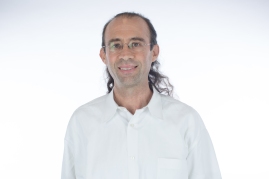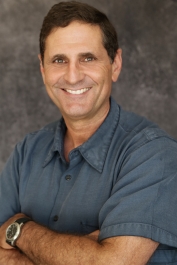In Canoga Park, a community in Los Angeles’ San Fernando Valley, many students at Canoga Park High School aren’t planning to attend for college. Most are low-income, many are first-generation immigrants, and some come from families whose members have less than a high school education. Even if college were on their radar, the social, cultural and economic facts of their lives pose substantial barriers. Additionally, they don’t always have the support they need to navigate the bureaucracy of a college application and financial aid process.
Despite these barriers, students from Canoga Park High School, the community’s largest high school, demonstrate considerable academic persistence, personal resilience and engagement in their community. They are fully aware of the social and economic promise that a college education can bring to them, their families and their community. In short, despite the barriers they encounter, they carry the promise of hope. Although some students may find their way to college, and many start with community college, only a small number are coming to our regional campus, California State University, Northridge (CSUN).
Along with other campus leaders, the CSUN Institute for Community Health and Wellbeing decided to catalyze campus-to-community programs to address this situation. We mobilized key members of both the CSUN campus and the Canoga Park community to assemble working teams with the purpose of creating a program to facilitate Canoga Park students attending CSUN. These efforts were supported by the Institute’s initiative, Neighborhood Partners in Action (NPA), launched three years earlier in the community of Canoga Park. NPA was the product of a two-year community listening campaign to identify how the university could help increase educational attainment in Canoga Park. CSUN faculty visited nonprofits and schools, talked to community leaders, and mapped out the neighborhood’s assets and social challenges. This campaign revealed, unsurprisingly, that financial issues were a huge factor in a student’s decision of whether to attend college. Based on the information we gathered from the listening tour, CSUN decided to launch Bridge to the Future (B2F) — a scholars program that provides a four-year, tuition-free education to a cohort of Canoga Park students.
Video of CSUN President Dianne F. Harrison announcing the Bridge to the Future program
To be clear, this is a program is not a scholarship. We call it a “scholars program.” The university is not only zeroing out tuition costs for students; it is also empowering these students and their families. They are educated about accessing financial aid and navigating the university bureaucracy. Also, B2F students are engaged by a range of mentoring and support activities to support their academic success. A significant component of B2F is to instill in the youth of Canoga Park a consciousness of the role they can play as agents of change in their home community. B2F students intrinsically know that they can improve the lives of those around them, and they are eager for the opportunity.
As part of their participation in the program, all B2F students are expected to give back to their community by participating in service activities and mentoring their younger peers at the high school. Returning to Canoga Park as role models for younger students, they will illustrate the accessibility of university attendance. Our goal is to build a new tradition and college-going culture within the community, so more students choose to apply to CSUN, pursue a four-year degree, increase the economic and social standing of their families, and outline a sustainable career trajectory for themselves.
As part of this effort we’ve engaged a number of local organizations: the West Valley Boys and Girls Club’s College Bound program, the local area public K-8 schools, the Canoga Park Chamber of Commerce and Neighborhood Council, the local City Council representative, more than a dozen family and community non-profit organizations, and the staff of the high school itself. Following the leadership of our university President and Provost, we have also received significant support from the university offices of student outreach, financial aid, academic resources and community engagement. We’ve also reached out to local businesses to see if they will sponsor a few students a year to help the program become even more sustainable.
Right now, we’re supporting about 25 students a year, so within the next four years we will achieve our goal of 100 students in the program. The Collaborative Opportunity Grant (COG) will help in substantial ways. We’ll use it to fund programmatic and outreach coordinators, and support other internal infrastructure so that we can engage with more students in the area. We’ll also provide resources to one of our most important community partners, the West Valley Boys and Girls Club, which is in the trenches directly supporting students through their College Bound program. Perhaps most importantly, the COG grant provides symbolic recognition for Canoga Park, signaling to the whole community that B2F has gained national attention. The implications of this recognition are enormous, both for the community and for CSUN, and help our efforts to promote the program locally.
Going to college is one of the most important things – if not the most important thing – that can happen in a young person’s life. The program has already generated considerable buzz in the community because we have B2F students going out and promoting it – students who are first-generation, bilingual, and who already understand the social situation of families in the area. It is simply huge for local families to know that there’s someone on the CSUN campus they can reach out to who understands them and their lives.
To evaluate success, we depend on the testimony of the B2F students themselves and their families, in addition to assessing the academic success of students through time. Bridge to the Future is designed to improve high school student enrollment, access to college, and retention at the university through sustained community collaboration. We’ve already had some early wins and are well on our way to scaling the program. With the help of the COG grant, which has been generously funded by the Bill & Melinda Gates Foundation, and in collaboration with our local partners and the Coalition of Urban Serving Universities, we’re confident that we can put college on the agenda for dozens of high school students in our Canoga Park community.
 David Boyns, Ph.D. is a Professor of Sociology and the Director of the Institute for Community Health and Wellbeing at California State University, Northridge. He specializes in community-engaged sociology, social theory, evaluation research, and the sociology of education. He has a passion for meditation and mindfulness practice, and promoting community and individual wellbeing. His current projects involve urban agriculture, the promotion of healthy eating, and increasing educational access for under-served students. He considers the Bridge to the Future initiative, funded by the USU/APLU Collaborative Opportunity Grant, to be one of the most important projects of his career.
David Boyns, Ph.D. is a Professor of Sociology and the Director of the Institute for Community Health and Wellbeing at California State University, Northridge. He specializes in community-engaged sociology, social theory, evaluation research, and the sociology of education. He has a passion for meditation and mindfulness practice, and promoting community and individual wellbeing. His current projects involve urban agriculture, the promotion of healthy eating, and increasing educational access for under-served students. He considers the Bridge to the Future initiative, funded by the USU/APLU Collaborative Opportunity Grant, to be one of the most important projects of his career.
 Doug Kaback, M.F.A. is a Lecturer in the Department of Theatre and Director of the Neighborhood Partners in Action (NPA) at California State University, Northridge. Throughout his career, he has focused on utilizing the arts as a learning tool and as an instrument for social change. With a particular emphasis on cultural diversity, he has created programs locally and nationally that have addressed racial violence, assimilation, end of life care, autism, and veterans’ concerns. Developing the NPA partnership with the community of Canoga Park, he looks forward to collaborating with the first class of Bridge to the Future Scholars as the incoming CSUN students generate meaningful civic engagement and acquire peer mentoring skills as they pursue their undergraduate degree.
Doug Kaback, M.F.A. is a Lecturer in the Department of Theatre and Director of the Neighborhood Partners in Action (NPA) at California State University, Northridge. Throughout his career, he has focused on utilizing the arts as a learning tool and as an instrument for social change. With a particular emphasis on cultural diversity, he has created programs locally and nationally that have addressed racial violence, assimilation, end of life care, autism, and veterans’ concerns. Developing the NPA partnership with the community of Canoga Park, he looks forward to collaborating with the first class of Bridge to the Future Scholars as the incoming CSUN students generate meaningful civic engagement and acquire peer mentoring skills as they pursue their undergraduate degree.

